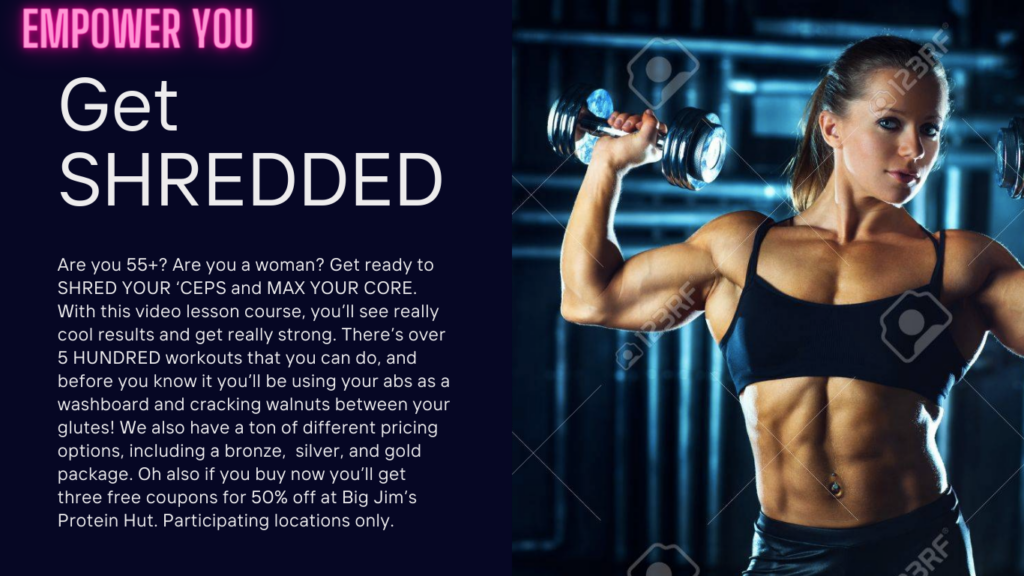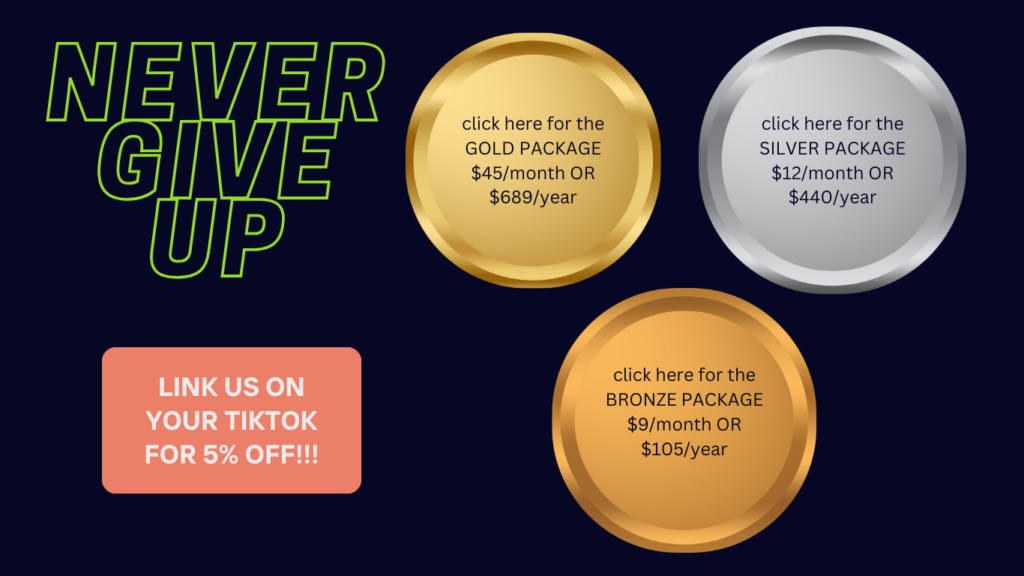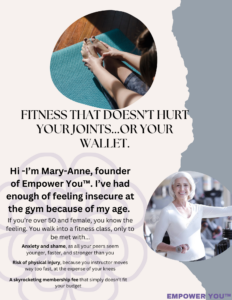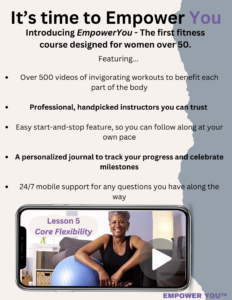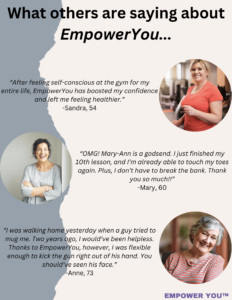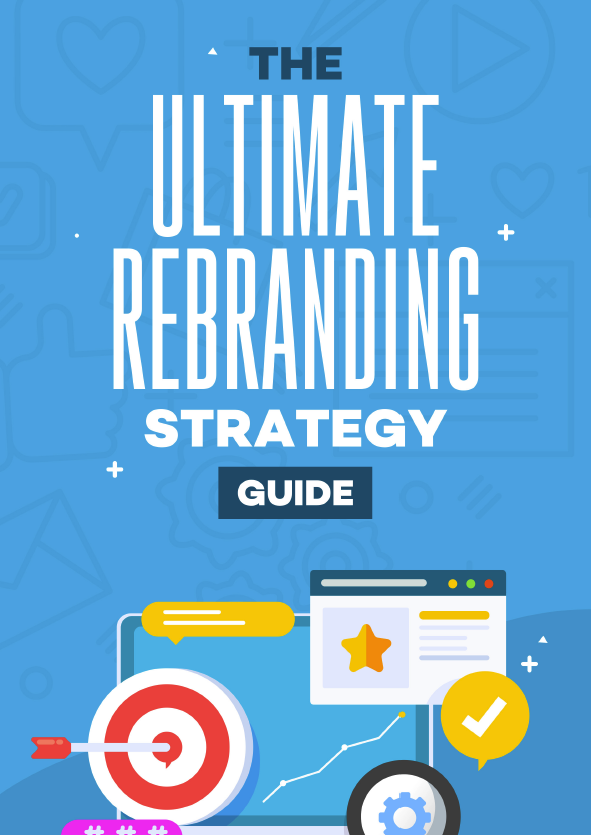What is a sales page?
Literally, a sales page is a web page that encourages visitors to buy what you’re selling. It has a picture of your product, the specifics, and a button to purchase.
But the real definition is this: Your sales page is the final shot you get to turn your visitor into a paying customer.
That’s why it’s so important – the content of your sales page will convince a visitor to do one of two options: buy your product, or get cold feet and back out.
…so, no pressure or anything!
Know Thy Customer
Who are you selling your product to? Elderly women? Teenagers? People with kids? Elderly teenagers with kids?
In order to create an engaging sales page, that’s exactly what you must discover – find out who exactly is buying your product the most, and find out all you can about what makes them tick. Failing to understand your audience will ruin your sales page.
For example, imagine you’re a 55+ woman looking to purchase an online fitness course. Your friend recommended a site called Empower You, which claims to specialize in fitness for older women. Sounds great! You go to check out the site, and find this…
Yikes! This does NOT look like it’s for you. A million thoughts are racing through your subconscious: Who is that extremely buff woman? I don’t look like that at all. Do you have to look like that to succeed at this course? Why is there a big wall of text? There’s a lot of different price points, but I can’t tell if I’m getting a good deal or not. What does “shred your ‘ceps” mean? I don’t use TikTok, so I won’t be able to get a discount. Do I need special equipment for this course? Will I be able to run it on my computer? Is this course too intense for me? Who is Big Jim?
And most importantly – what exactly am I paying for?
*Click!*
…and that’s the sound of you clicking away to go look for something better.
Do your research
To avoid the above catastrophe, you need to do some research on your customers.
One of the best ways to obtain information is to simply ask for it. Send out a survey [along with your newsletter] full of questions you have. Or, ask for a quick Zoom call with a focus group of your choice customers.
Remember that these people are taking time out of their day to help you, so always offer a reward for completion (i.e a discount coupon for your product, a free consultation call where you offer your expert advice, or even a DoorDash gift card will do!)
What to ask
The questions you ask your customers should find out at least one of the following:
- What does your customer want or need?
- What is standing in the way of them getting it?
- What would they be willing to pay for a solution?
That being said, here’s a list of questions that I like to ask our customers. Simply substitute “X” for your niche (fitness, cooking, writing, fashion, etc.), and feel free to rewrite these questions to fit your personality and voice better:
- What is the biggest roadblock in your X journey?
- What areas have you thrived in X?
- Where do you see yourself with X in 6 months? A year?
- What other X products/services have you tried? Did they help?
- What X accounts do you follow on social media, if any?
- What would help you achieve your X goals?
That last question is really important. Sometimes we get so caught up in predicting what the customer wants, that we forget to ask them directly.
Other places to research
Besides surveys, don’t forget these other great resources of customer research…
Forums and subreddits centered around your niche are great places for customer research. Of course, try and build up a reputation in these communities before demanding information from them – people are more likely to help if they see you aren’t just after their money.
Reviews on Amazon or Yelp show you what people like and dislike about the products in your niche. Once you have a good idea of what they want, you can swoop in with the perfect product or service.
Competitor’s pages are actually a wealth of information – just scrolling through the followers on your “rival” brand’s social media page gives you a neat little list of potential customers.
Creating a buyer persona
It’s usually a bad idea to try and put people into boxes – after all, everyone is unique, and each of us has our own values and desires.
…but that’s exactly what you should do. It’s called creating a buyer persona, and it’s actually pretty fun.
Using what you’ve learned from your research, create a persona of the average customer for your product or service. Write down their…
- Age
- Gender
- Economic status
- Values
- Spending habits (are they thrifty? Impulsive?)
- Likes and motivators
- Dislikes and fears
…and that’s just a few options. What else do you think you should know about your customer? (Hint: Think about what causes or prevents them from spending money on your product)
Setting realistic goals
Time to talk about money. Before you even begin to write your sales page, there are some questions you must ask yourself:
- How much will you charge for your product?
-
- How much money do you expect to make off of sales?
- How long until you make that amount?
-
- How much do you expect to lose from refunds?
- How many visits to your sales page are you expecting?
- How are you going to track all this information?
The answer to these questions will lead you to concrete, realistic sales goals.
You can use your customer research and analytics from previous sales to help narrow it down, as well as check out your competitors’ pricing.
Our biggest secret: How we attracted hundreds of customers to a brand new blog
We aren’t gonna beat around the bush: the secret to attracting people to your sales page is catchy, attention-grabbing headlines. Just like this one 🙂
But it’s tricky – your headline has to jump through a few hoops if it’s going to keep your customer on the page. Using our fake fitness sales page from earlier, let’s take a look at what to do (and what not to do) when creating a headline:
- Keep it simple, but not too broad. “Get SHREDDED” is easy to remember, but it’s too generic. Plenty of fitness courses promise to get you shredded, but your headline needs to prove why your company is different from the rest.
- Validate your customer’s fears. Remember, this is supposed to be a fitness course for older women. None of them are worried about being shredded, they’re worried about things like cost and accessibility – your headline should acknowledge, then immediately offer a solution to your audience’s pain points.
- Keep it short and sweet, two sentences at most. If you find yourself struggling to fit your message into one headline, or if your headline is too broad, employ the use of subheadings. Whatever you do, don’t hit your audience with a paragraph for a headline.
Before settling on a headline, write out 20-25 different potential versions. You may find that your first idea wasn’t as effective as you thought, so it’s good to have a few backups.
Structuring your sales page
Organize it, and then organize it again
Why do you think communities such as r/oddlysatisfying are so popular? What is it about a glass fitting perfectly into another glass, or a row of carefully stacked oranges, that draws so many people in?
It’s science, of course. Humans love organization, and we’re more apt to engage in something if it’s broken down into neatly organized boxes. It makes us feel more safe and in control, which is how your customer should feel about your sales page….
That being said, here’s the structure we use for most of our clients’ sales pages:
- Introduction – The attention-grabbing sentences that get your customers reading
- Pain points identification – The specific problems your customers are facing
- Presenting the solution – A solution to said problems
- Highlighting benefits and features – A rundown of what’s in your product and how it will help
- Social proof and testimonials – Stories from real people who have benefitted from your product
- Call to action (CTA) – Click here! Buy now! Sign up today!
Crafting persuasive copy
- Introduction – This is one of the most important parts of your sales page. Like a good book, you want to hook them without giving away too much information.
Keep it to a couple of lines at least, and a short paragraph at most. Explain briefly what you’re selling, but don’t start listing out the benefits yet -that’ll come later.
- Pain points identification – If you’ve done your research, you’ve already identified your pain points! You can use them here to list attention-grabbing, specific scenarios that your customer will relate to. Don’t be afraid to use…
…One of your testimonials “Before starting this program, I always felt too insecure to go to the gym…”
…Urgency “The best time to start improving your health is now! Don’t wait until you’ve injured yourself to strengthen your body in recovery. Avoid injury in the first place by working on a stronger body today.”
…A personal story “I spent years trying to get into a regular fitness routine but struggled to stay on track.”
All of this building up will lead right to…
- Presenting the solution! This is the part where you relieve your customers’ fears with the ultimate solution: your product. Now you get to talk about all its fancy bells and whistles.
However, if they don’t know who you are, they won’t buy it. It’s imperative to also introduce yourself. If you have experience in other successful areas of your niche, or you have an inspirational story of why/how you started your brand, here’s the place to put it.
People prefer to buy things from a friend as opposed to a stranger, so don’t forget to talk directly and informally to them. (Just like how I’m talking to you, old pal.)
- Highlighting benefits and features – Too many people make the mistake of just listing features without highlighting the actual benefits.
In other words, your customers don’t care that your flashlight carries “the latest Luminus SFT70 LED battery”. They probably don’t even know what that is, let alone how it compares to the last model.
Say it has “the latest Luminus SFT70 LED battery for 50,000 hours of powerful beam”, however, and they may prick their ears up.
Remember: your customers don’t want to do a lot of thinking on your sales page. Make things easier for them by following up each of your product’s features with a way it can improve their life.
- Social proof and testimonials – People are more likely to buy something if their friend talks about how great it is. And what better place to do so than right on your sales page?
If you’ve already been selling your product for a while, you may have some good testimonials ready to go. Be sure to contact the customer in question and ask if it’s ok to use their words in an advertisement. You can also incentivize people to leave reviews with offers of discounts or freebies.
If you’ve never sold this product before, how are you going to get testimonials from happy customers? This isn’t the chicken-egg scenario it appears to be – even if you haven’t sold your product yet, there’s nothing wrong with you giving it away for free (or at a discounted price) to beta testers. Just ask them for an honest review in exchange.
- Call to action (CTA) – If you’ve played your cards right, your sales page should funnel right into one, singular button: your Call to Action.
This is where you turn to your customer and say “Ok, I’ve given you the rundown, it’s time to make a choice.”
We’ll talk more about Calls to Action further down this article.
Writing for SEO
SEO (Search Engine Optimization) as a concept has been around since the late 90’s, but it’s more important now than ever.
Whenever anyone types something in the search bar, Google uses SEO to scan your website for key terms, then decides if it’s relevant enough to display. The whole thing takes place in under a second, and can determine if a thousand people see your sales page, or just a hundred.
To appease the GooGods (the Google Gods), it’s important to include the right mix of keywords in your copy. For our example fitness blog, we might try to use the terms “female” “women” “fitness” “health” and “over 50” a lot (but keep it sounding natural!)
Tools like Google Analytics, or paid programs like Ahrefs can help you effectively measure and plan your SEO. Just paste in your keywords, and it’ll generate a report on how often other websites use those terms and how widely searched-for they are.
Design and Formatting – Do’s and Don’ts
Your copy could be the best, most persuasive copy in the world. But it’ll be a complete waste if your customer can’t properly read it. Here’s a list of do’s and don’ts of sales page writing:
- Don’t mess around too much with text color, and try to keep it to a maximum of one or two fonts. Too many colors with too many fonts makes your webpage look like a box of crayons threw up on it.
- Don’t neglect aesthetics – each niche has their own “vibe” that can be incorporated into your graphic design. Pay attention to your competitor’s sites and see what themes come up.
- Don’t use big blocks of text. Nobody likes reading long paragraphs. If they wanted to do that, they could just pick up a book. A chapter book, that is. Picture books tend to not have that many words. Also, big long paragraphs usually don’t even need to be that long. You end up saying the same thing over and over, so what’s the point? If your reader gets bored with the long paragraph, they might just gloss over it and miss the most important parts of your product. And that’s bad! Isn’t that bad? I hope you’re taking notes on this.
- Do use bullet points and lists wherever you can to visually break up paragraphs
- Do highlight important information with bold or italic text
- Do utilize plenty of white space to enhance readability
Your Call-to-Action
Buy now! 🤑
Click here! 🎯
Download today! ⬇️
Find out more! 🔎
Your call to action is just that – calling out to your customers and telling them to take action. AKA, “You’ve read the entire sales page and now it’s time to click something.”
How to make an irresistible Call to Action
- Utilize buttons – Similar to how lab rats push switches to receive treats, your customer will experience a rush of dopamine whenever they get to click a button.
Instead of peanut butter, however, the “easy reward” in this case will be your wonderful product. (Of course, your product could actually be peanut butter…)
- Don’t overdo it – Some people think having dozens of CTA buttons all over their sales page will make their customers click on them faster.
It won’t.
Like adding spice to soup, one or two calls to action can bring out a sense of urgency in your customer. Too many, however, overwhelms the point and makes you look a bit desperate. A couple in the middle and one at the end will do the trick.
- Create a sense of urgency – Without urgency, your customer might decide to put your page aside and “think about it” for a while, which leads to them forgetting all about you.
Utilizing features like countdown timers, as well as action-oriented language (A.K.A, words like now, this month only, today, click here) can provide a good push to get your customer clicking.
Lastly, put your customer at a crossroads. Instead of giving them just the option to buy your product, you can also provide them with a choice to not buy your product, like this:
This way, the customer doesn’t get to say “no” to your product without first visualizing a future without it.
Testing and Optimization
The truth is, you’re never really “done” working on your sales page. SEO results, customer needs, and even your product itself will change over time.
That’s why it’s so important to keep data on your sales page, so you can continue constantly updating and improving your copy to get the best results.
“How long should my sales page be?”
Studies have shown that long-form sales pages have higher conversion rates than short-form ones. That being said, there are definitely times when a long page can be overkill.
So, our answer? It depends on the price of your product.
The general rule of thumb is the higher your price, the longer your sales page should be. People want to get as much information about your product as they can before spending a lot of money on it.
If you’re selling something for a lower cost, or as a series of low-cost payments, a short, snappy sales page might be the best way to go.
If you’re still unsure, check out what your competitors are doing!
Putting it all together
Great news! While you were reading this article, it looks like someone went in and fixed our Empower You sales page. Let’s take a look!
Wow!! That’s a LOT better than the first one!
Notice how…
- The introduction hooks you in with a short, clever sentence
- Headlines and important phrases are bolded, while quotes are italicized
- Pain points are specific examples of what a customer may be struggling with
- The design is simple and matches the aesthetics of the customer
- There’s plenty of white space on the page for enhanced readability
- Features are described along with their benefits
- Bullet points break up long paragraphs
- Testimonials and Mary-Anne’s personal introduction add a level of trust
- Customers are given two Calls-to-Action, with the last one putting them at a crossroads
*Click!*
…And that’s the sound of making a sale.
Congrats! You now know the ins-and-outs of making a great sales page. Need more information on the next step? Click here to check out more cool guides and resources!

